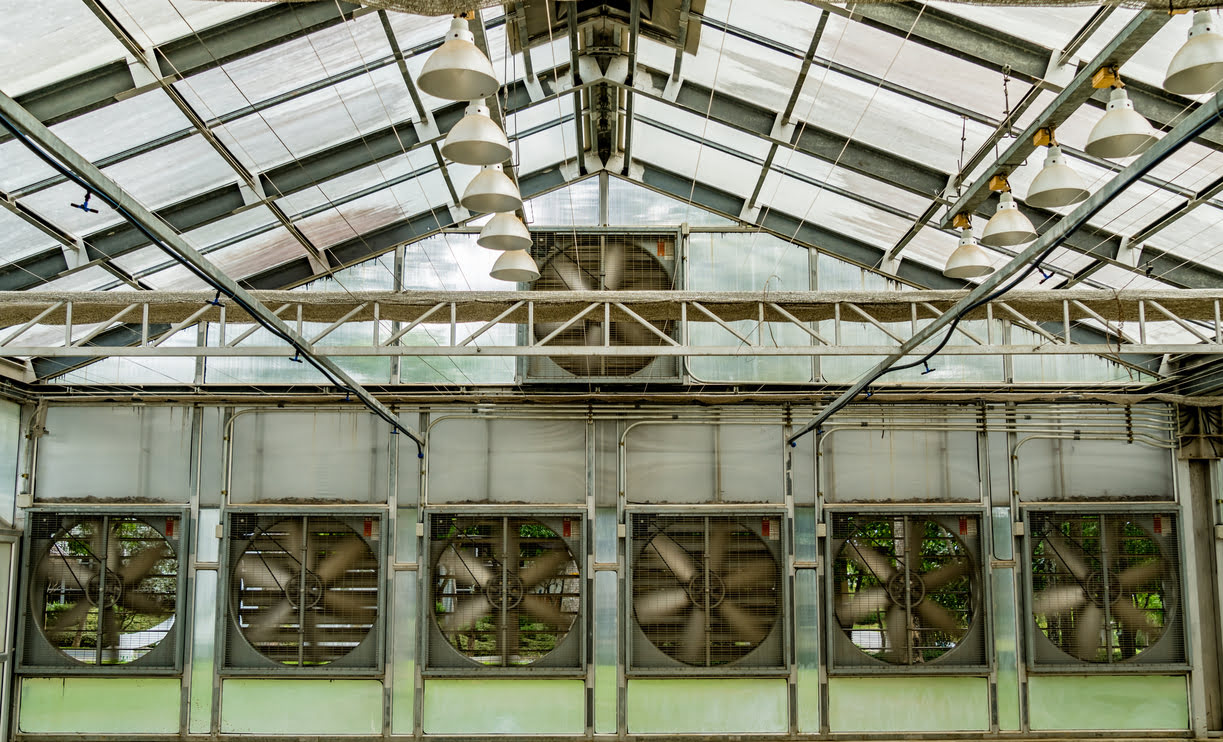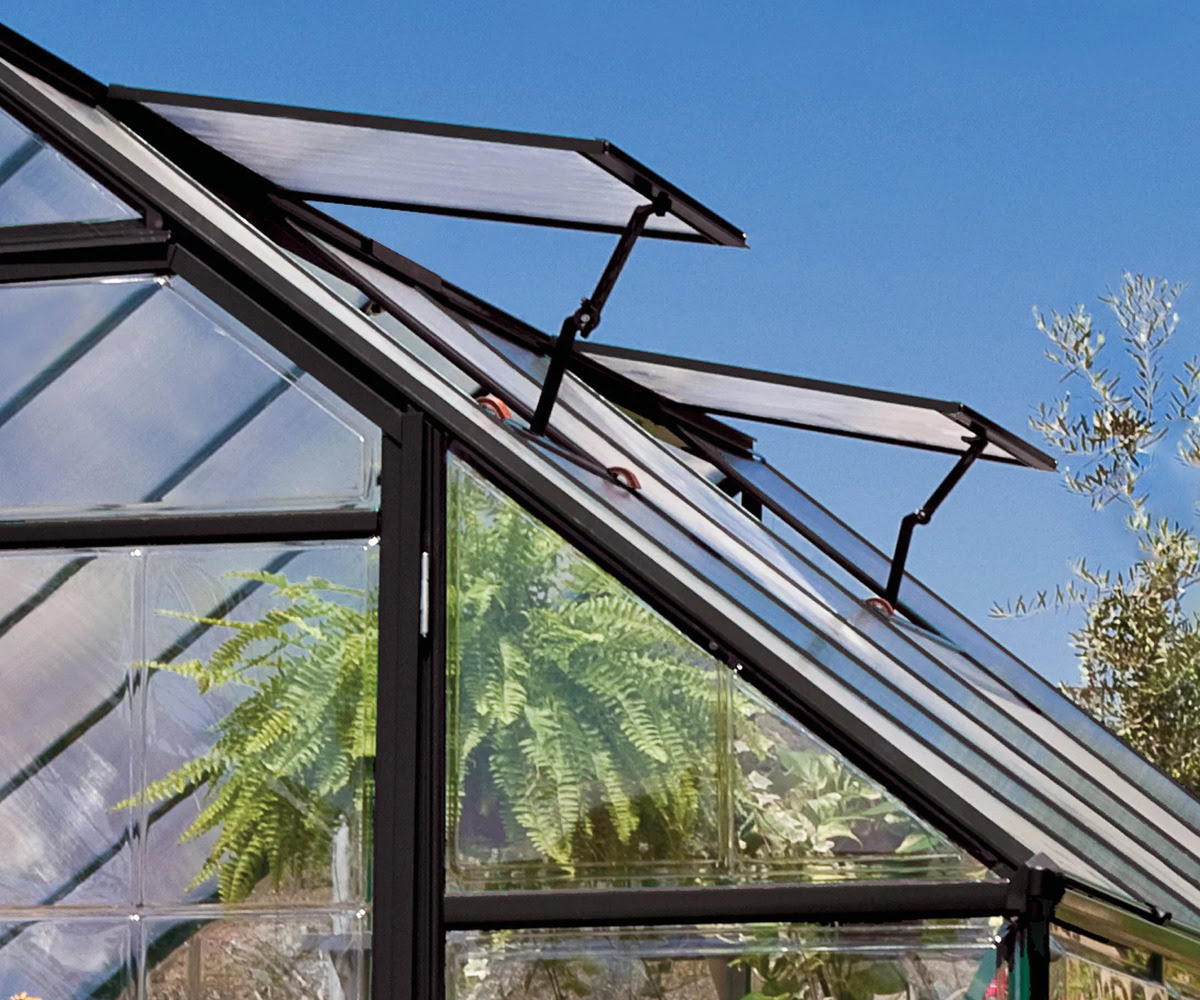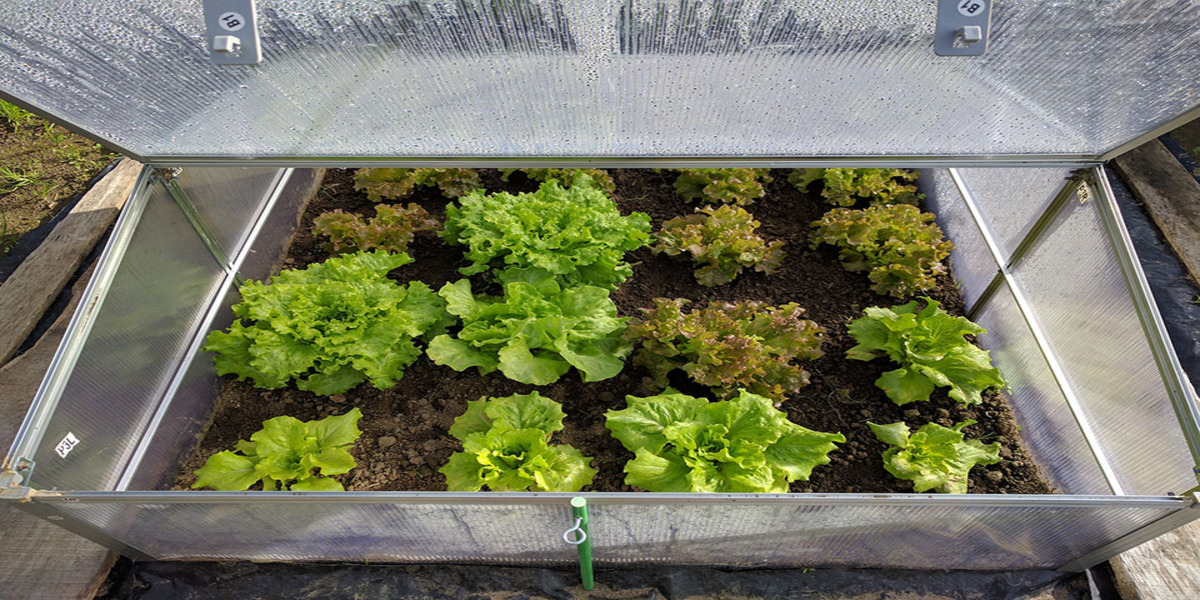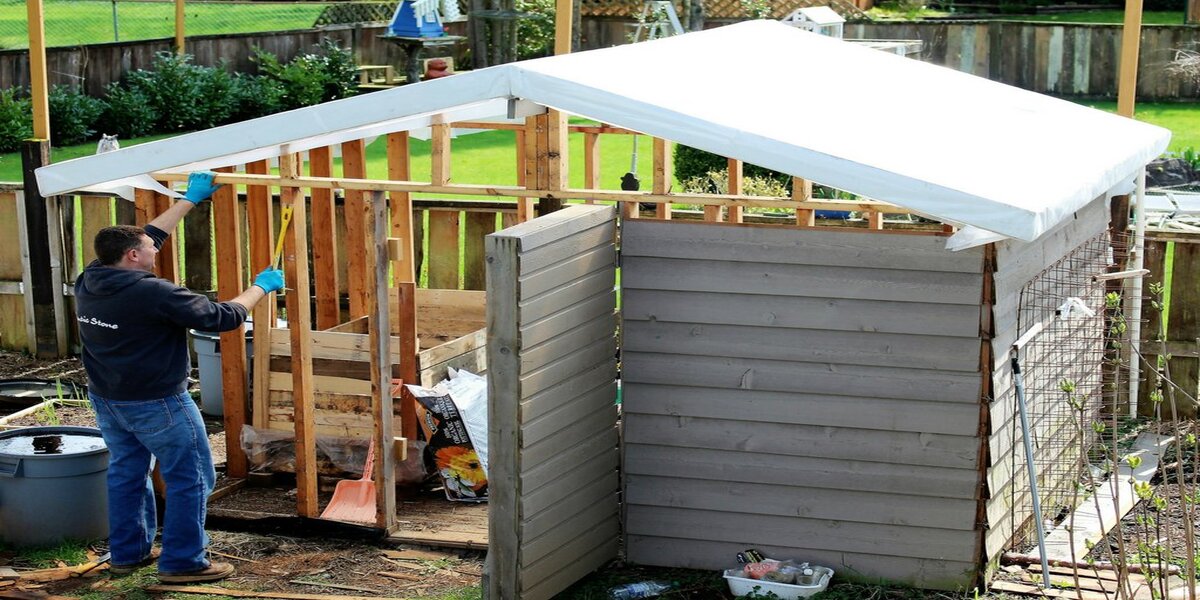Home>Gardening Techniques>DIY Projects>How To Vent A Greenhouse
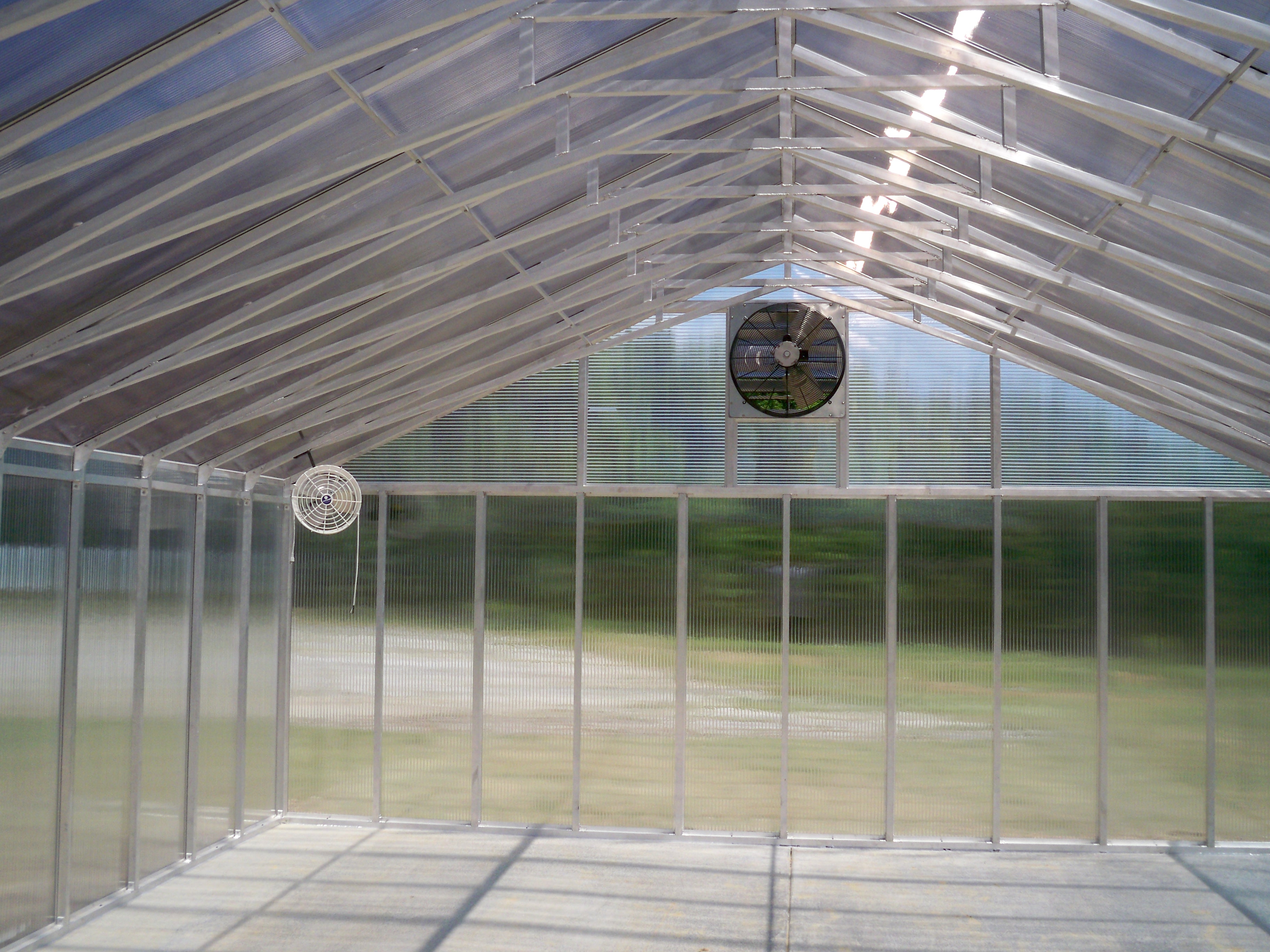

DIY Projects
How To Vent A Greenhouse
Modified: January 22, 2024
Learn how to vent your greenhouse efficiently with these DIY projects. Create the perfect environment for your plants to thrive.
(Many of the links in this article redirect to a specific reviewed product. Your purchase of these products through affiliate links helps to generate commission for Chicagolandgardening.com, at no extra cost. Learn more)
Table of Contents
- Introduction
- Importance of Ventilation in a Greenhouse
- Factors to Consider Before Venting
- Types of Greenhouse Ventilation Systems
- Natural Ventilation Techniques
- Mechanized Ventilation Methods
- Determining the Number and Placement of Vents
- Best Practices for Greenhouse Ventilation
- Common Ventilation Problems and Solutions
- Conclusion
Introduction
Welcome to our comprehensive guide on how to vent a greenhouse. As DIY enthusiasts, we understand the joy and satisfaction that comes from growing your own plants and creating a thriving greenhouse ecosystem. A crucial aspect of maintaining a healthy environment for your plants is proper ventilation.
Proper ventilation in a greenhouse plays a vital role in regulating temperature, humidity, and air circulation. Without adequate airflow, your plants may suffer from heat stress, inadequate CO2 levels, or increased humidity, leading to disease and reduced crop yields. Ventilation is especially important during the hot summer months when temperatures can skyrocket.
Whether you are a seasoned gardener looking for new techniques or a beginner embarking on your first greenhouse project, this guide will provide you with valuable insights into the various ventilation systems available, best practices for installation, and troubleshooting common ventilation problems.
Before we dive into the details, it is essential to understand that ventilation requirements will vary depending on your geographical location, the size of your greenhouse, the type of plants you are growing, and the overall climate in your region. Therefore, it is crucial to assess these factors and tailor your ventilation setup accordingly.
In the following sections, we will explore the different types of greenhouse ventilation systems, from natural techniques to mechanized methods. We will also discuss factors to consider before implementing a ventilation system and provide guidance on determining the number and placement of vents for optimal airflow.
By the end of this guide, you will be equipped with the knowledge and understanding needed to effectively ventilate your greenhouse and provide the ideal environment for your plants to thrive. Let’s get started!
Importance of Ventilation in a Greenhouse
Proper ventilation is essential for the health and success of plants in a greenhouse. Here are the key reasons why ventilation is crucial:
- Temperature Regulation: Maintaining the ideal temperature range is vital for plant growth. During hot weather, excessive heat can build up inside the greenhouse, putting stress on the plants. Ventilation allows hot air to escape, preventing overheating and creating a cooler environment.
- Humidity Control: Greenhouses can become humid quickly, especially when plants transpire and release moisture into the air. High humidity levels can lead to the spread of fungal diseases and the growth of mold. Proper ventilation helps to remove excess moisture and maintain optimal humidity levels for plant health.
- Air Circulation: Plants require a constant supply of fresh air to replenish CO2 levels and promote healthy growth. Ventilation systems ensure proper air circulation, preventing stagnant air pockets and enabling plants to absorb CO2 while releasing oxygen.
- Pest and Disease Prevention: Good ventilation reduces the risk of pest infestation and the spread of diseases. Insects and pathogens thrive in warm and humid environments, but with proper airflow, their population can be controlled, reducing the need for chemical pesticides.
- Enhanced Pollination: Many plants rely on pollinators such as bees and butterflies. Adequate ventilation helps attract pollinators into the greenhouse, improving pollination efficiency and increasing the yield of fruits and vegetables.
Without proper ventilation, the environment inside a greenhouse can become inhospitable for plants. Heat stress, high humidity, and stagnant air can lead to wilting, disease development, poor growth, and even crop loss. A well-ventilated greenhouse, on the other hand, creates an optimal growing environment, enabling plants to thrive and produce abundant yields.
When designing your greenhouse ventilation system, consider the specific needs of your plants, the climate in your area, and your budget. In the next sections, we will explore the different types of ventilation systems available and guide you on selecting the most suitable option for your greenhouse.
Factors to Consider Before Venting
Before implementing a ventilation system in your greenhouse, there are several important factors to consider. Taking these factors into account will help you design and choose the most effective ventilation setup for your specific needs. Here are the key considerations:
- Greenhouse Size and Layout: The size and layout of your greenhouse will determine the type and number of vents needed for proper airflow. A larger greenhouse will require more ventilation compared to a smaller one. Additionally, the shape and orientation of your greenhouse can affect air movement, so plan accordingly.
- Geographical Location and Climate: Different regions have varying climate characteristics, including temperature, humidity levels, and prevailing winds. Consider your location and the typical weather patterns throughout the different seasons. Areas with hot summers may require more ventilation options to combat high temperatures, while regions with high humidity may need additional measures to control moisture levels.
- Type of Plants: The type of plants you are growing plays a role in determining the ventilation requirements. Some plants are more sensitive to heat or humidity, while others may require higher CO2 levels. Research the specific needs of your plants to ensure optimal conditions are provided through proper ventilation.
- Budget and Preferences: Your budget will also influence the type of ventilation system you choose. There are various options available, ranging from simple and inexpensive techniques to more advanced and costly mechanized systems. Consider your budget constraints and personal preferences when deciding on the most suitable ventilation approach.
- Noise and Energy Efficiency: If noise is a concern, you may want to opt for a ventilation system that operates quietly. Additionally, consider the energy efficiency of the system. Some mechanized systems may require electricity to operate, while natural ventilation techniques can utilize natural resources, such as wind or solar power.
By carefully evaluating these factors, you can make informed decisions about the ventilation system that best fits your greenhouse needs. Taking the time to plan and consider these factors will ensure that you provide the ideal growing environment for your plants.
Now that we have examined the factors to consider, let’s move on to exploring the different types of ventilation systems available for your greenhouse.
Types of Greenhouse Ventilation Systems
When it comes to greenhouse ventilation, there are various options to choose from. Each system has its advantages and is suitable for different greenhouse setups and climates. Let’s explore the most common types of greenhouse ventilation systems:
- Natural Ventilation: Natural ventilation relies on passive techniques to circulate air in the greenhouse. This can include vents, doors, and windows strategically placed to take advantage of prevailing winds and temperature differentials. It is a cost-effective option that utilizes natural airflow and doesn’t require any additional mechanical equipment.
- Ridge Ventilation: Ridge ventilation is a type of natural ventilation where vents are located along the ridge of the greenhouse roof. This allows hot air to rise and escape through the highest point of the greenhouse, creating a chimney effect that draws in cool air from lower openings. Ridge vents provide excellent airflow and are well-suited for larger greenhouses.
- Side Ventilation: Side ventilation involves openings along the sides of the greenhouse, often in the form of vents or louvers. These vents can be manually or automatically operated to allow cool air to enter from one side and warm air to exit from the other side. Side ventilation is flexible and can be adapted to different greenhouse sizes and layouts.
- Hinged Roof Vents: Hinged roof vents are usually placed at the top of the greenhouse. These vents can be manually or automatically controlled and provide an effective means of releasing hot air. By adjusting the angle of the vent, you can regulate the amount of airflow. Hinged roof vents are particularly useful in greenhouses with higher ceilings.
- Mechanized Ventilation: Mechanized ventilation involves the use of fans and motors to actively circulate air inside the greenhouse. This type of system provides more control over airflow and is suitable for larger greenhouses or areas with specific ventilation requirements. Mechanized ventilation can be combined with natural ventilation techniques for optimal results.
Each type of ventilation system has its benefits and considerations. Natural ventilation techniques are cost-effective and beneficial in moderate climates, while mechanized systems provide precise control but require an investment in equipment and energy consumption. Consider your specific greenhouse needs, budget, and climate when selecting the appropriate ventilation system.
In the next sections, we will delve into the details of different natural and mechanized ventilation methods to help you make an informed decision for your greenhouse.
Natural Ventilation Techniques
Natural ventilation techniques harness the power of natural airflow to provide adequate ventilation in the greenhouse. These methods rely on the strategic placement of openings, such as vents, doors, and windows, to allow for the exchange of fresh air and the removal of hot, stale air. Here are some popular natural ventilation techniques:
- Vent Placement: Properly placed vents can take advantage of prevailing winds to create a cross-ventilation effect. This involves having vents on opposing walls or sides of the greenhouse, allowing for air to enter from one side and exit from the other. Place vents at different heights to facilitate the movement of warm air out of the greenhouse.
- Doors and Windows: Doors and windows can be utilized to control airflow in the greenhouse. Keeping doors and windows open during the day can promote air circulation, especially if strategically placed to take advantage of prevailing winds. Install screens or mesh on openings to keep pests out while allowing for airflow.
- Louvered Vents: Louvered vents have adjustable slats that can be opened or closed to control the amount of airflow. They are often placed along the sides of the greenhouse and can be manually or automatically operated. By adjusting the angle of the slats, you can control the direction and speed of the incoming air.
- Shade Cloth: Installing a shade cloth on the exterior of the greenhouse can help regulate temperatures by blocking out excessive sunlight. This can reduce the need for additional ventilation during hot summer months. Choose a shade cloth with a weave that allows for some airflow while providing shade.
- Roof Ventilation: Installing vents along the roof or ridge of the greenhouse allows hot air to rise and escape. This natural convection helps maintain a cooler environment inside. Ridge vents or hinged roof vents are popular options for roof ventilation.
Natural ventilation techniques are cost-effective, energy-efficient, and environmentally friendly. They can be used alone or in conjunction with mechanized ventilation systems for enhanced control. However, it is important to monitor weather conditions and adjust ventilation openings accordingly to prevent overheating or excessive cooling.
While natural ventilation is effective in many situations, it may not be sufficient for larger greenhouses or in regions with extreme weather conditions. In such cases, mechanized ventilation methods can be used to supplement and provide additional control over airflow within the greenhouse.
In the next section, we will explore various mechanized ventilation methods that can be incorporated into your greenhouse ventilation system.
Mechanized Ventilation Methods
Mechanized ventilation methods involve the use of fans, motors, and automated systems to actively circulate air in the greenhouse. These methods provide precise control over airflow and are particularly useful in larger greenhouses or areas with specific ventilation requirements. Here are some common mechanized ventilation methods:
- Exhaust Fans: Exhaust fans are commonly used in greenhouse ventilation systems. They are installed at one end of the greenhouse and draw out the hot air, creating a negative pressure that pulls fresh air in from the other end or through intake vents. Variable-speed exhaust fans can be adjusted to meet specific airflow needs.
- Intake Fans: Intake fans work in conjunction with exhaust fans to create airflow within the greenhouse. These fans draw in fresh air, which is then evenly distributed throughout the greenhouse by the exhaust fans. Intake fans are positioned on the opposite end of the greenhouse from the exhaust fans to promote proper air circulation.
- Circulation Fans: Circulation fans are used to improve air movement and prevent stagnant pockets within the greenhouse. They are strategically placed to ensure even distribution of air, especially in larger greenhouses. Circulation fans can be combined with exhaust and intake fans to maximize airflow and minimize temperature variations.
- Automated Control Systems: Automated control systems offer advanced features to optimize greenhouse ventilation. These systems monitor temperature, humidity, and other environmental factors and automatically adjust the ventilation settings to maintain ideal conditions. They can be programmed to operate fans, louvers, and other ventilation equipment based on preset parameters.
- Cooling Pads and Mist Systems: In addition to fans, cooling pads and mist systems can be used to reduce greenhouse temperatures. These systems work by introducing fine water droplets or evaporative cooling pads that lower the temperature as air passes through them. Combined with proper ventilation, they can effectively cool the greenhouse during hot weather.
Mechanized ventilation methods offer precise control over airflow, making them ideal for larger greenhouse operations or regions with extreme weather conditions. They allow for automation and integration with climate control systems, providing optimal growing conditions for your plants.
It is important to select the appropriate system based on your greenhouse size, climate, and budget. Consider factors such as noise levels, energy efficiency, and maintenance requirements. Combining mechanized ventilation methods with natural techniques can provide a comprehensive and efficient solution for maintaining a healthy and productive greenhouse environment.
In the next sections, we will discuss how to determine the number and placement of vents for optimal airflow and cover best practices for greenhouse ventilation.
Determining the Number and Placement of Vents
The number and placement of vents in a greenhouse are crucial for ensuring adequate airflow and proper ventilation. Here are some factors to consider when determining the number and placement of vents:
- Greenhouse Size: The size of your greenhouse will influence the number of vents required. As a general guideline, aim for approximately 20 square feet of vent area per 1,000 square feet of greenhouse space. This allows for sufficient airflow and helps maintain a balanced environment.
- Inlet and Outlet Vents: It is essential to have a combination of inlet and outlet vents to promote proper air circulation. Inlet vents allow fresh air to enter the greenhouse, while outlet vents facilitate the exit of warm and stale air. Place inlet vents on the side of the greenhouse away from prevailing winds, and outlet vents on the side closer to the wind direction for efficient airflow.
- Uniform Distribution: Distribute vents evenly throughout the greenhouse to ensure uniform airflow. This helps prevent temperature variations and reduces the risk of stagnant air pockets. Avoid clustering vents in one area, as this may result in uneven ventilation and compromised plant health.
- Plant Density: Consider the density of plants in different areas of your greenhouse when determining vent placement. If certain areas have denser plant growth, it may be necessary to provide additional vents to ensure adequate airflow and ventilation. Adjust the number and size of vents accordingly to accommodate varying plant densities.
- Observe and Monitor: Observe how air flows inside your greenhouse and identify areas that need better ventilation. Notice any hotspots or areas where air movement seems stagnant. Monitor temperature and humidity levels throughout the day and adjust the position and size of vents as needed to maintain optimal growing conditions.
Proper vent placement is crucial for creating a well-ventilated and healthy greenhouse environment. Take into account the specific needs of your plants, the size and layout of your greenhouse, and the prevailing climate conditions in your area. By considering these factors and employing proper vent placement, you can ensure effective airflow and maintain an environment conducive to plant growth.
In the next section, we will cover some best practices for greenhouse ventilation to help you optimize your ventilation system and create an ideal growing environment for your plants.
Best Practices for Greenhouse Ventilation
Achieving optimal ventilation in your greenhouse requires careful planning and implementation. Here are some best practices to ensure effective and efficient greenhouse ventilation:
- Regular Maintenance: Keep your ventilation system clean and well-maintained. Regularly inspect and clean vents, fans, and other components to ensure they are free from debris and functioning properly. Lubricate fans as needed and replace any damaged or worn-out parts to maintain optimal airflow.
- Monitor Temperature and Humidity: Use a thermometer and a hygrometer to monitor temperature and humidity levels inside the greenhouse. This will help you make informed decisions about when to open or close vents and adjust fan speeds. Avoid excessive temperature fluctuations and high humidity levels, as they can negatively impact plant health.
- Utilize Natural Ventilation Strategies: Take advantage of natural ventilation techniques whenever possible. Open doors and windows strategically to allow for cross-ventilation and natural airflow. Install vents or louvers at different heights to facilitate the escape of warm air and the entry of fresh air from lower levels.
- Consider Climate Control Systems: In regions with extreme weather conditions, consider investing in climate control systems that can automatically adjust ventilation settings based on preset parameters. These systems can integrate with fans, vents, and other equipment to optimize airflow and maintain ideal growing conditions.
- Implement Shading: Install shading devices, such as shade cloths or blinds, to regulate sunlight and prevent excessive heating during hot summer months. Shading reduces the need for additional ventilation and helps to protect plants from direct sunlight, preventing sunburn and heat stress.
- Monitor Air Quality: Poor air quality can hinder plant growth and contribute to the spread of diseases. Regularly monitor air quality inside the greenhouse and take measures to improve ventilation if necessary. This may include adding additional vents, using air purifiers, or ensuring proper filtration systems are in place.
- Observe and Adjust: Continuously observe and assess the effectiveness of your ventilation system. Look for signs of poor ventilation, such as wilting plants, mold growth, or high humidity levels. Make adjustments as needed by opening or closing vents, adjusting fan speeds, or adding additional ventilation equipment based on the specific needs of your greenhouse.
By following these best practices, you can ensure that your greenhouse is properly ventilated, creating an environment where your plants can thrive. Regular maintenance, monitoring of environmental conditions, and utilizing natural ventilation techniques will contribute to healthy plant growth and increase your chances of a successful harvest.
In the next section, we will discuss common ventilation problems that greenhouse growers may encounter, as well as potential solutions to address these issues.
Common Ventilation Problems and Solutions
While proper ventilation is essential for a healthy greenhouse environment, various issues can arise that hinder optimal airflow. Understanding common ventilation problems and their solutions will help you address these challenges effectively. Here are some common ventilation problems and potential solutions:
- Inadequate Airflow: Insufficient airflow can lead to stagnant air pockets and poor ventilation. To address this problem, ensure that vents are properly sized and positioned to allow for efficient air movement. Consider adding additional vents or fans to improve airflow distribution. Regularly clean and maintain vents and fans to prevent blockages.
- Uneven Ventilation: Uneven ventilation can result in temperature variations and uneven plant growth. To mitigate this issue, strategically place vents at different heights and positions throughout the greenhouse. Utilize fans or circulation fans to promote even distribution of airflow. Monitor temperature and humidity levels throughout the greenhouse to identify areas that may require additional ventilation.
- Excessive Heat: Excessive heat buildup can damage plants and reduce crop yields. To alleviate this issue, consider installing additional vents or fans to facilitate air exchange and promote cooling airflow. Implement shading methods, such as shade cloths or blinds, to reduce direct sunlight and lower greenhouse temperatures. Regularly monitor and adjust ventilation settings to maintain a comfortable temperature range.
- High Humidity: High humidity levels can lead to fungal diseases and slow plant growth. To combat high humidity, ensure proper vent placement to facilitate air movement and moisture removal. Consider installing dehumidifiers or fans to enhance moisture control. Enhance natural ventilation techniques to promote efficient airflow and reduce excessive humidity levels.
- Poor Outdoor Air Quality: If the outdoor air quality is poor, it can negatively impact the greenhouse environment. To mitigate this issue, ensure adequate filtering systems are in place to remove pollutants and contaminants from incoming air. Regularly maintain and clean intake vents and filters to prevent clogging and to ensure the delivery of clean, fresh air into the greenhouse.
- Insufficient Ventilation in Winter: Maintaining proper ventilation during the winter months can be challenging. To address this issue, consider using insulated covers or greenhouse curtains to reduce heat loss while still allowing for controlled ventilation. You may also need to adjust fan speeds or restrict vent openings to prevent excessive cold drafts. Monitor temperature and humidity levels to ensure optimal growing conditions.
By being proactive in identifying and addressing ventilation problems, you can create a healthy and optimal environment for your greenhouse plants. Regularly assess your ventilation system and make necessary adjustments to promote efficient airflow, maintain appropriate temperatures, and control humidity levels.
In the next section, we will wrap up our guide on greenhouse ventilation with a summary of the key points discussed and some final tips for successful greenhouse ventilation.
Conclusion
Proper ventilation is the key to maintaining a healthy and thriving greenhouse environment. By implementing effective ventilation techniques, you can regulate temperature, control humidity, promote air circulation, and prevent the spread of diseases. Whether you choose natural ventilation methods or opt for mechanized systems, it is essential to consider the specific needs of your greenhouse, the plants you are growing, and the climate in your region. Take into account factors such as greenhouse size, vent placement, and regular maintenance to ensure optimal airflow and ventilation.
Natural ventilation techniques, such as strategic vent placement, louvered vents, and roof ventilation, offer cost-effective and environmentally friendly options. Mechanized ventilation methods, including exhaust and intake fans, circulation fans, and automated control systems, provide precise control over airflow, making them ideal for larger greenhouses or areas with extreme weather conditions. Combining natural and mechanized techniques can yield the most effective results, promoting a well-ventilated and healthy environment for your plants.
To achieve successful greenhouse ventilation, incorporate best practices such as regular maintenance, monitoring temperature and humidity levels, utilizing natural ventilation strategies, and considering climate control systems. Address common ventilation problems such as inadequate airflow, uneven ventilation, excessive heat, high humidity, poor outdoor air quality, and insufficient ventilation in winter with appropriate solutions.
Remember, greenhouse ventilation is not a one-size-fits-all approach. It requires careful observation, adjustments, and fine-tuning to meet the unique requirements of your greenhouse and plants. Regularly assess your ventilation system, monitor environmental conditions, and make necessary changes to optimize airflow and create an ideal growing environment.
With the knowledge gained from this comprehensive guide, you are now well-equipped to vent your greenhouse effectively. Embrace the benefits of proper ventilation, and enjoy the rewards of healthy, vibrant plants and bountiful harvests in your greenhouse journey.

